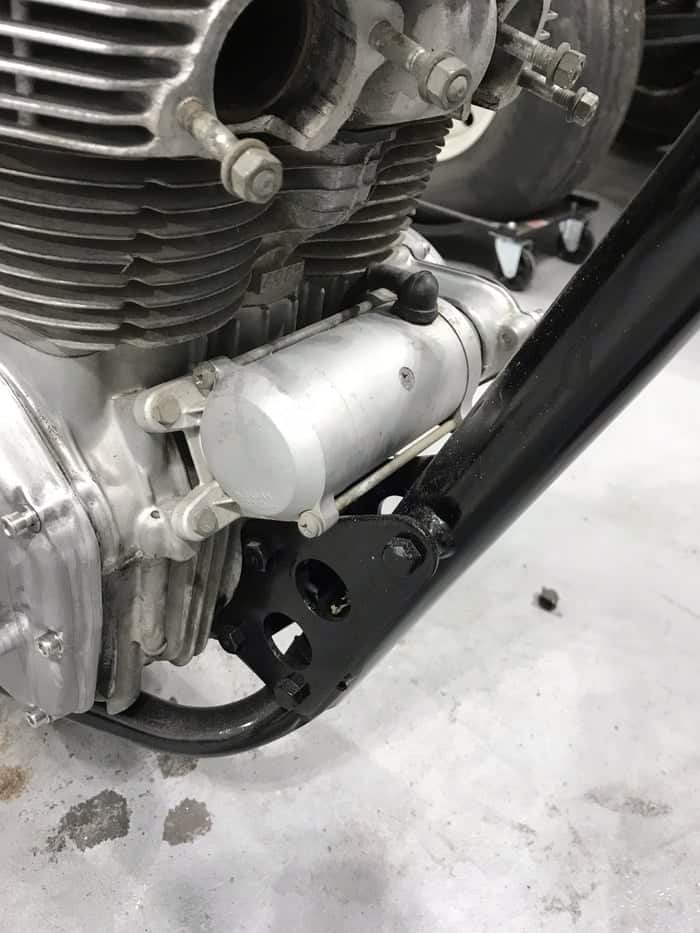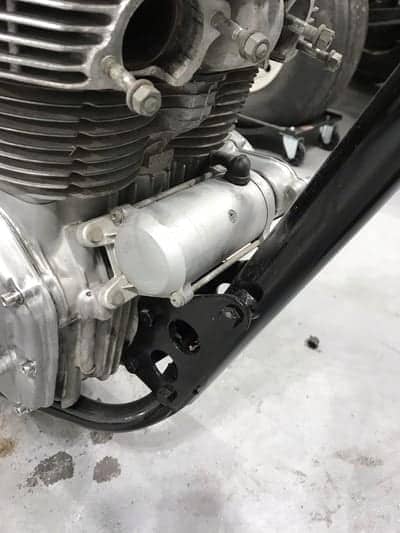
Nothing is worse than going to start your motorcycle and realizing it will not start. There can be a lot of reasons why a motorcycle won’t start and a lot of the times it can be something wrong with the starter. Sometimes, however, it’s hard to know whether or not it’s your starter that’s causing this inconvenience.
So, what are the symptoms of a bad motorcycle starter? Symptoms of a bad motorcycle starter may include the motorcycle not being able to start at all, the motorcycle only starting intermittently, hearing the starter running even when the engine has already started, and being able to hear a strange clicking sound from the starter.
If you are experiencing any of these symptoms, your starter could very well be the culprit. Your starter is responsible for providing power from your battery to the motor. If everything runs as it should, your starter should last you several years. Alternatively, if your starter ever quits on you entirely, you could be stranded.
Common Symptoms Indicating Your Motorcycle Starter Is Bad
In order to understand what is going on with your motorcycle, it is important that you understand the starter circuitry and how it works. When you turn the ignition on, the starter motor is energized. This causes the electromagnet inside of the solenoid body to engage. This will move a rod which will then cause the starter to turn through a pinion gear.
The turning of the starter motor will then turn the vehicles engine over forcing it to suck air in and to have fuel injected. Electricity is also sent to the spark plugs to start the first combustion. This is how your engine starts and covers the basics of how your starter circuitry works. With this basic knowledge, you are now able to understand how this system can be diagnosed.
Your motorcycle generally will give you hints that something is failing. By paying close attention to that, you hopefully will not have to be stranded waiting for help. If you catch a failing starter soon enough, you may not have to replace it and could potentially just repair it instead. This will save you money and frustration down the road.
The first symptom you may notice is that your motorcycle will not start at all. If you go to start up your bike and it just will not turn over, it very well could be your starter. It is also important that you make sure that your battery is functioning as it should. If your battery voltage drops too low, you may not be able to supply enough amps to the starter in order to actually start it.
So even if all of your lights and everything work, but the bike still is not starting, the culprit could be either the battery or the starter. Measuring the voltage at the battery is a great way to determine whether the battery is the cause or the starter. Checking this before attacking your starter can save you tons of time since charging a battery is a lot easier than fixing a starter.
Another symptom of a failing starter is intermittent starting. Over time, the internal components of the starter begin to wear. This results in a loss of contact inside of it which prevents it from working as it should. This can lead to it intermittently working. A good way to test this is to wait until it won’t start. If you take a hard object like a hammer and tap the starter motor it will often times start up for you.
If you hear some sort of strange clicking noise coming from your starter, is likely the starter solenoid going bad. Over time, this noise occurs as corrosion starts to appear. There is a good way to rule out whether the solenoid is failing in this case vs. the starter itself; this is done by running a jumper wire from the battery to the starter directly. If nothing happens, then the starter is the problem. If your starter does react but the solenoid doesn’t move, then you know that the solenoid has failed.
Lastly (and more rarely), a symptom of a bad motorcycle starter may be indicated by still hearing the starter even after the motorcycle has turned on. Sometimes there are electrical shorts within the starter so even after the motorcycle has turned on, the starter still continues to try and start the motorcycle by delivering voltage. This will result in a grinding sound.
How To Fix A Bad Starter
If there is an issue with your starter motor, you can oftentimes fix it yourself. It is important that you thoroughly diagnose your motorcycle before beginning to repair anything. If you skip over the diagnosis, you will very likely spend time “repairing” the motor just to find out that it still is not working.
You want to know whether your solenoid is bad, the starter is bad, the battery is the problem, etc. You also should take a look at the wiring to the motor. Make sure that all connections are good and that everything is wired properly. Once you have narrowed down the problem you are ready to start disassembly.
You can disassemble the entire starter motor and put it back together. Many starter motor brands offer specific instructions for their own starter motors. Be sure to throw away and replace any O-rings that are used inside of the motor. Once you have removed the armature from the cover entirely, you can inspect it for any abnormal wear.
Also, take a look at the bearing at the end of the cover. Make sure that it can spin freely. You also can measure the diameter of the commutator. Your motorcycle will have an explicitly stated service limit. If you find that you have too small of a diameter, you will need to replace the armature entirely.
You can also remove the brushes entirely. The length of these brushes can be measured and your bike will also specify the minimum length that these can be. If necessary, you can replace these brushes. Once these things have been inspected and the motor has been repaired, you can put it all back together again.
At What Point Should You Replace The Starter?
It’s possible for you to be able to repair any starter motor that has failed or that is starting to fail. But when is it better just to buy a new starter? This is a hard question to answer as it really depends on a lot of things. The first factor is cost. A new starter motor for your motorcycle could be anywhere from $80-$350.
This will vary from bike to bike. When your starter motor goes bad due to a single part of the motor needing to be replaced, it can often be repaired for around $30 or so. If you are needing to save money this can cut the cost down immensely.
Another important factor is time. Replacing a starter motor is relatively simple. Generally, you can do it yourself in about 15-20 minutes or so. Repairing a starter motor can take quite a while. To remove and tear the starter motor apart can take about 30 minutes on its own. Then there is time to diagnose the different components of the motor, replace them, and then re-assemble the motor. Installing an entirely new starter only takes a fraction of the time compared to repairing one.
Another very important factor is the age of the starter. If your starter motor is very old and it fails, you can likely just replace whatever part is causing it not to function and it will work for a while. Due to its age though, it is fairly likely that it will fail again soon. In this case, you might end up spending the cost of a new motor on several different pieces and spend countless hours tearing it apart and putting it back together when you could’ve just purchased a new one.
Ultimately, it is up to you whether you repair or replace your starter motor. I personally almost always replace the starter motor. Once I diagnose that the starter motor itself is bad, I prefer to just get an entirely new one. To me, the time spent makes it hard to justify the difference in cost. Ultimately, you will have to decide what is best for you and your motorcycle.
Preventative Maintenance For Your Starter
There are several things that you can do to help extend the life of your motorcycle’s starter motor. The biggest thing that you can do is regularly clean all connections to the starter motor. Corrosion, dirt, and other contaminants can build up where the wires come from the battery and connect to the starter motor. Eventually the buildup can interrupt the flow of electricity and prevent the starter motor from working.
Another important thing to check periodically is that the starter mounting bolts are properly tightened. If these become loose, the motor will vibrate excessively. This will cause it to fail prematurely. This can also prevent the starter from being able to engage properly with the flywheel.
By doing these things, you can ensure that your starter motor lasts as long as possible before needing to be repaired or replaced.

